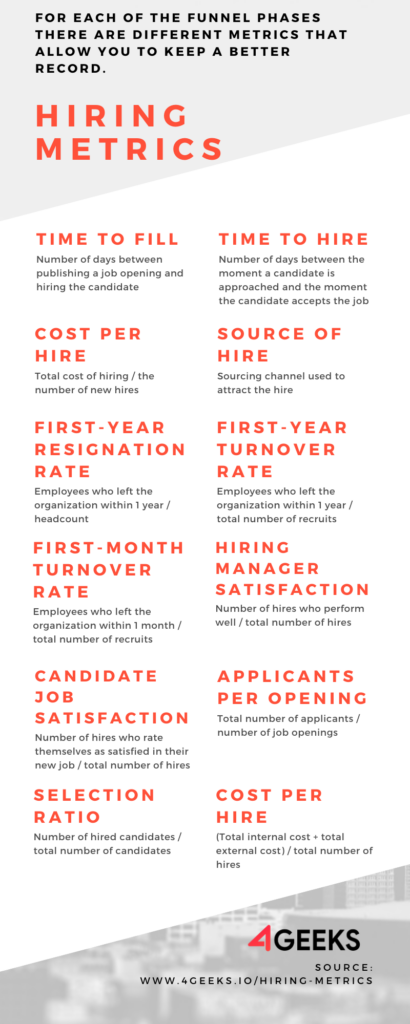3 Secret Metrics In Your Hiring Process (Plus The Perfect Hiring Funnel)

Recruitment of personnel although it is a key activity of companies, had not had much innovation until the years of the Second World War.

The ancient Egyptians have the oldest records of the definition of social strata differentiated (with the “pyramid of power”) by labor activity. Although we have the idea that it was a society with a large number of slaves, this is not entirely true.
And the first professional details of a person and where he worked were found in ancient Rome on rock and wooden tablets.
But it was not until the time of Imperial China that a record of a recruitment process was found as such with the Imperial exams. These were to get candidates for civil service in the Han dynasty around 1500 BC. As a curious fact, when this finding was made they were known as “exams from hell.”
But enough of history and back to our time, well a little earlier: the WWII.
In these years there were many labor gaps resulting from the call of men to war. This is why the creation of more recruitment agencies was necessary. Even after the war ended, professional job recruiters continued to find work for the returning soldiers.
But although recruitment has been improving and optimizing its processes for several years, there is still a lot of opportunity for improvement. For sample:
Between 34 and 40%, are not tracking close rate through the generic hiring process.
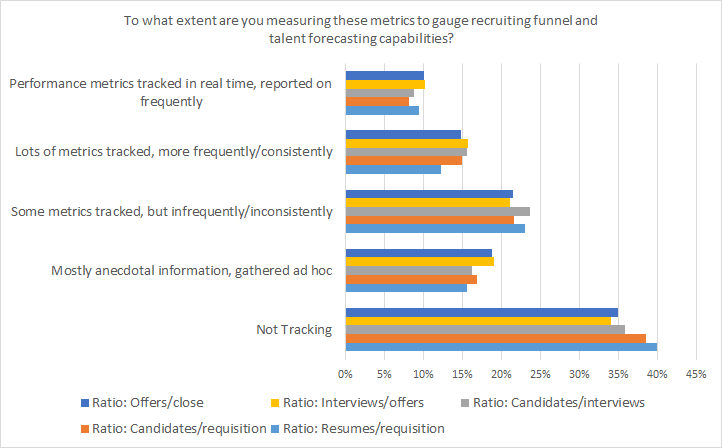
But why is it so important to have metrics in the recruitment process?
Metrics guide us through all processes and not just in recruitment. The metrics indicate the progress or the delay of our objectives. Metrics are measures of quantitative assessment commonly used for assessing, comparing, and tracking performance.
The main metric in the hiring process is “Revenue per employee“. But first let me explain to you the North Star Metric.
“The North Star Metric is the single metric that best captures the core value that your product delivers to customers. Optimizing your efforts to grow this metric is key to driving sustainable growth across your full customer base.”
The Revenue per Employee is a measure of the total Revenue for the last twelve months (LTM) divided by the current number of Full-Time Equivalent employees.
Sum(Revenue LTM) / Count(Full-Time Equivalents)https://www.klipfolio.com/metrics/finance/revenue-per-employee
This metric cannot be easily compared with other companies. It influences the sector, the size and the phase in which each company is located.
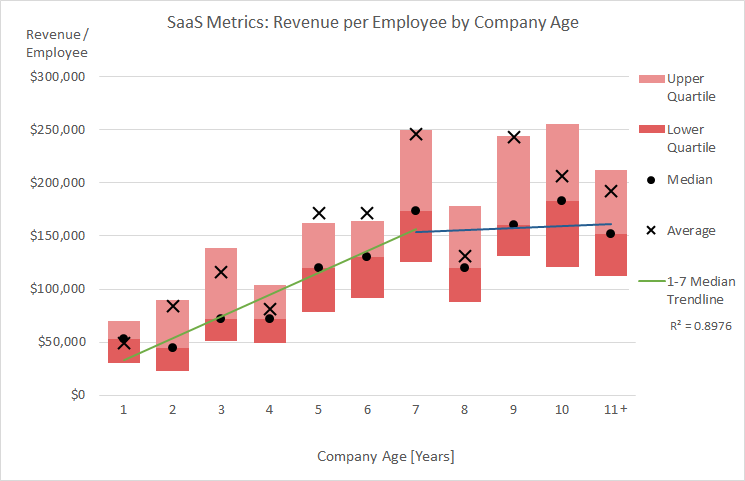
In the end we will pick up this number to clarify whether or not it is the north star metric of the recruitment process.
¡Wait! Do you want to know what are the 3 hidden metrics in the recruitment process? Go see them right now. Now we are going to define the perfect hiring funnel.
Hiring process
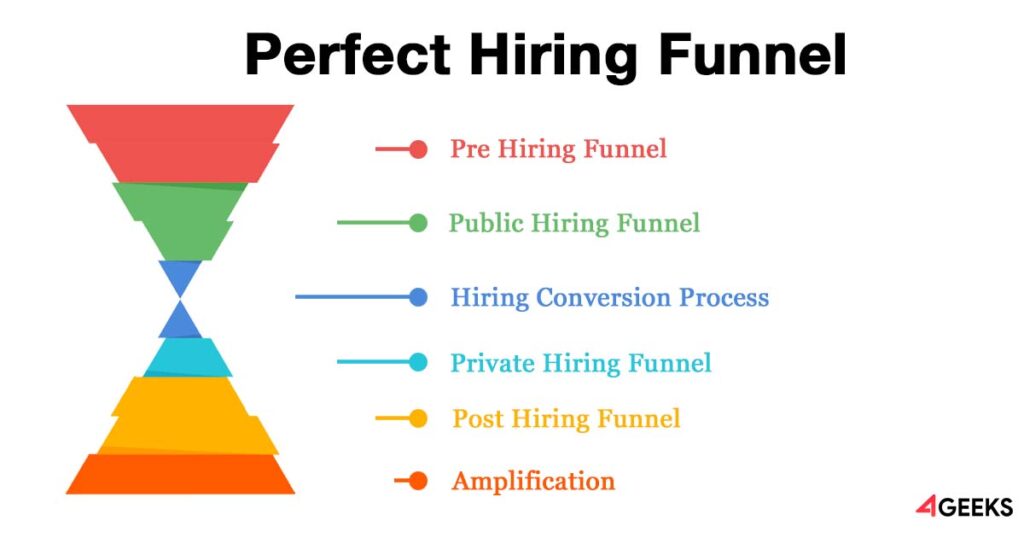
To begin with, there are two types of recruitment: internal and external. Internal recruitment is known as promotion and we will not touch it in this guide. On the other hand, external recruitment is what we are going to focus on.
In general terms, the recruitment process can be summarized in 3 general steps: attract, convert and retain. Easy peasy… but wait, nothing is too easy. There are many steps that we have to consider.
Let’s start with the foundation. The pre-hiring funnel.
Pre-hiring funnel
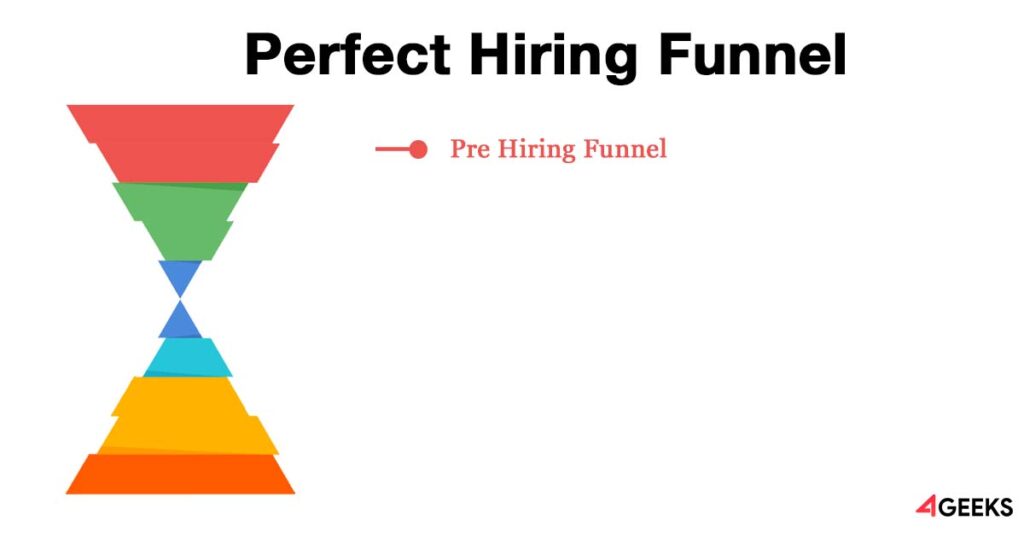
The best example of the bandwagon effect is the empty bar effect. What happens when you go through an empty bar? Do you feel like entering? Most of us answer no. Instead, a full bar attracts most people. The same goes for a company.
When a company has happy collaborators, they gain professional experience, have new challenges and their achievements are recognized, that is shared and spread. It is attractive to others.
This is achieved through branding.
You need powerful branding to get the best in their positions. But what happens if you don’t have a strong brand? One on one effort baby… one on one.
But you also need to define perfectly what profile you need for the position to be filled:
- Hard skills. Obviously.
- Soft skills. Not so obvious.
- Time to hire. When you need to fill the position.
- Documentation.
- Define if the person will be in-house or remote.
Not planning is planning to fail.
With these two issues resolved we can fully enter the first formal phase of the funnel or how we get prospects for our vacancies.
Public hiring funnel
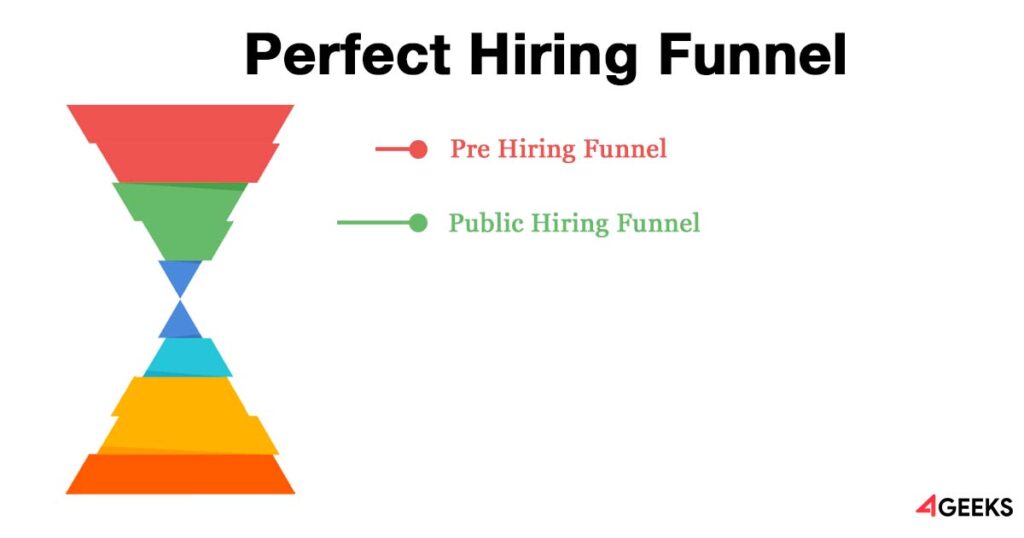
With the hard skills you are looking for, you have a long way to go. I will explain.
Imagine that you have to hire a software engineer but you don’t make the list of necessary skills and knowledge, you will be looking at each and every one of the job board sites. However, if you define perfectly what technology is required, you can establish the best channels.
Sometimes we take it as obvious and it makes us waste time, money and effort. We do not want this.
Channels of recruitment
There are two types of channels and two ways to approach them. The own channels and those of others and the inbound and outbound approach.
The first place to look is in our talent pool. With the hustle and bustle of everyday life it is difficult to know in detail who we have had in the recruitment process before. A talent pool is a database of candidate profiles interested in working for your organization.
The other channel of his own is our career page. The career page is the most important page on your site to attract talent. This should contain photographs, testimonials, description of the organizational culture and of course the list of open positions.
Your career page must be the main concentrator of applicants.
It is time to go outside. We have to make a good selection of job boards so as not to waste effort. Here is a list of +100 job boards.
Each job board has its rules and procedures, we must adapt each to our selection process. In addition it is always good to document each of the processes, so we can know which job board is more effective for each position.
Do you remember that in the pre funnel we talked about perfectly defining our work position? This information will help us in this step.
But let’s not forget social networks. They are also an important channel for recruitment. You don’t depend solely on your company profiles, use personal and groups, hashtags, trends, etc. Depending on the size of the company it is also advisable to write a blog post.
The channels mentioned above are considered inbound. They serve us to attract the best quality and quantity of applicants. In summary they are:
- Talent Pool
- Careers page
- Job boards
- Social media
- Blog post
As in advertising, we have to be creative. We can also design a viral recruitment campaign, for example Rich Silverstein’s hilarious assistant application. Take a look here.
But how much work we have done so far. And it’s not over …
There are many positions that are not easy to fill and we have to make outbound to reach the best candidates. This is not always glamorous but the important thing is to fill the position.
Use your own contacts. Surely you have good social relationships that allow you to put the machinery of the recommendation to work. As easy as asking and following up.
The main channels for outbound are:
- Referrals
- Cold contact
Linkedin is an excellent recruitment channel using social selling, since we can filter and analyze the professional profile that each person has in a public way.
Indeed you can focus all the outreach recruitment effort with social selling on LinkedIn.
But it’s important don’t stop the effort to cold contact through email or phone and if you don’t even start yet, anytime it’s a good time to start. Don’t be scared, At the beginning it is tough, but with practice it becomes less difficult. I highly recommend the content generated by Steli Efti.
Well, reaching this point we must already have a considerable amount of applicants to the job or jobs we have open. Although we should collect the data little by little, it is always good to make a summary by having a certain number of applicants.
Do you have a system to analyze the keywords that appear in the resumes? Creating one helps you make a better selection. At this time we need to start the next phase of the funnel:
The hiring conversion process.
In this phase we begin to filter the best resumes and we have a deeper approach with each of the applicants.
Hiring conversion process
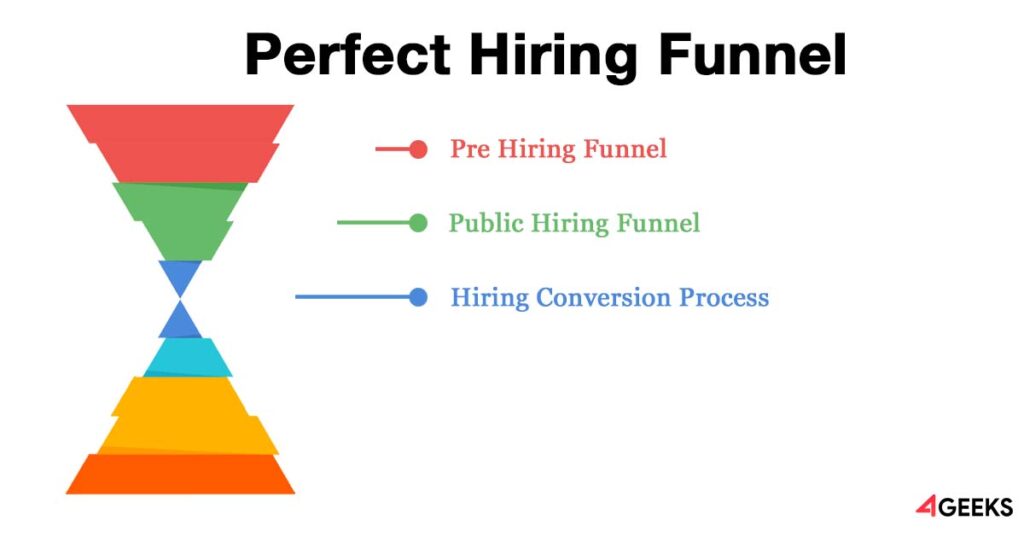
When you outreach this phase of the funnel it becomes a bit obvious because you already have a lot of information and above all you have a desire to get hired. This happened more often in C-levels but due to the fierce competition in specialized positions it is no longer the case.
But it is not the same case with the inbound approach. In this case you do not know in depth the skills and abilities of each candidate. That’s why we need a filtering system.
The filtering system can be done in several ways, it all depends on what we are looking for specifically. It is not the same to fill a position when the company is 3 months old when it is 3 years old.
A quick filtering system is through keywords. If you don’t use recruiting software, you can do it in a spreadsheet. What you should do is to dump the information of each candidate on the sheet and then apply a formula that helps you know the frequency of a value. For example, if you are looking for X technology and are assertive, you can filter all those who mention these terms.
I know that this process is cold and distant and surely we can leave some excellent candidates for the position but it is humanly impossible to review one by one.
There is software that automates this process and others. When possible, I recommend investing in recruitment software.
It is time to meet the candidates in person.
Depending on the tests you have to perform each candidate for the position, always leave a margin of time before and after each one and be clear about how long each activity will take.
To evaluate the candidates we must investigate each candidate. Use social networks and search your name on Google. Do not skip this step, you can take unpleasant surprises.
This is the central phase of the hiring funnel and if we fail here, we dismiss all the previous effort.
Let’s go to the private hiring funnel.
Private hiring funnel
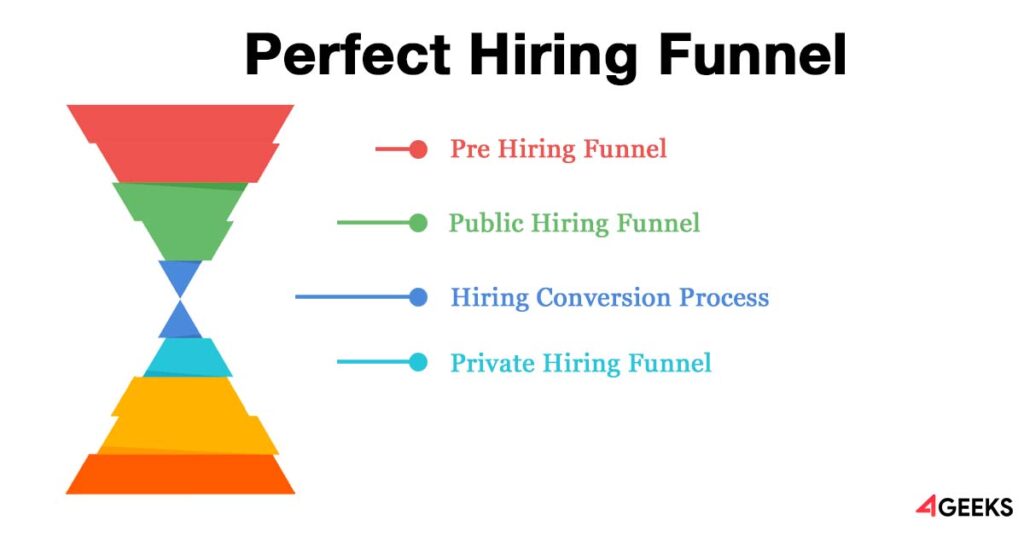
Already with a more intimate environment, we move on to the phase where we negotiate the salary, review legal aspects and the onboarding process is done.
We must be very careful in this phase, it would seem to be the easiest and fastest but it is quite the opposite. Something very special happens: we fall in love with the candidates.
Falling in love is not bad, but in this situation. Although we say we are the most professional and assertive in the world, it always happens. We believe that there is no better candidate than the one we chose and we do not see any defect.
But it also happens to the applicant.
And another important issue is negotiation. If we do not have a defined budget it is very complicated to reach an agreement for the same reason to fall in love with the candidate.
So then, define well the budget you have for each position and the negotiation margin.
With the legal documents we must be very clear, there should be no doubt here.
Already with the agreed salary and signed legal documents we go to the onboarding process in the post hiring funnel.
Post hiring funnel
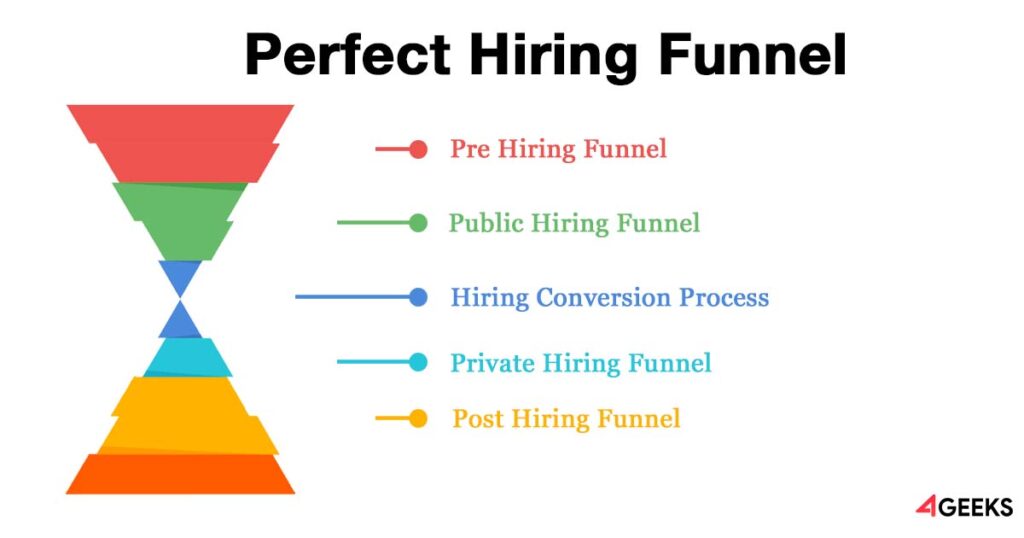
Plan the first victory for your new recruitment. The concept of first victory is more ingrained in retail with which it is a question of reaffirming that the best decision was made. For example in some restaurants they serve a snack, this is a reward for us by the establishment for choosing them.
The best way to give the first victory is with the registration of accounts, presentation with the team and some simple tasks. There is no worse environment than seeing a new colleague watching the roof without knowing what to do …
It is important to have the proper documentation for this process. There is no excuse for the size of your company.
The adaptation process will depend on each person. We can facilitate it through integration activities assigned previously, for example John gives him the list of best restaurants in the area and Jane tells who to address in special situations. There are hundreds of examples and a lot of opportunities for rapid integration if you do the above.
Personnel retention does not start at 6 months, it starts from day one.
The set of daily actions determine the culture of a business. Do not let the routine not allow you to have solid work teams.
Now let’s move on to the stage that almost nobody takes into consideration: amplification.
Amplification
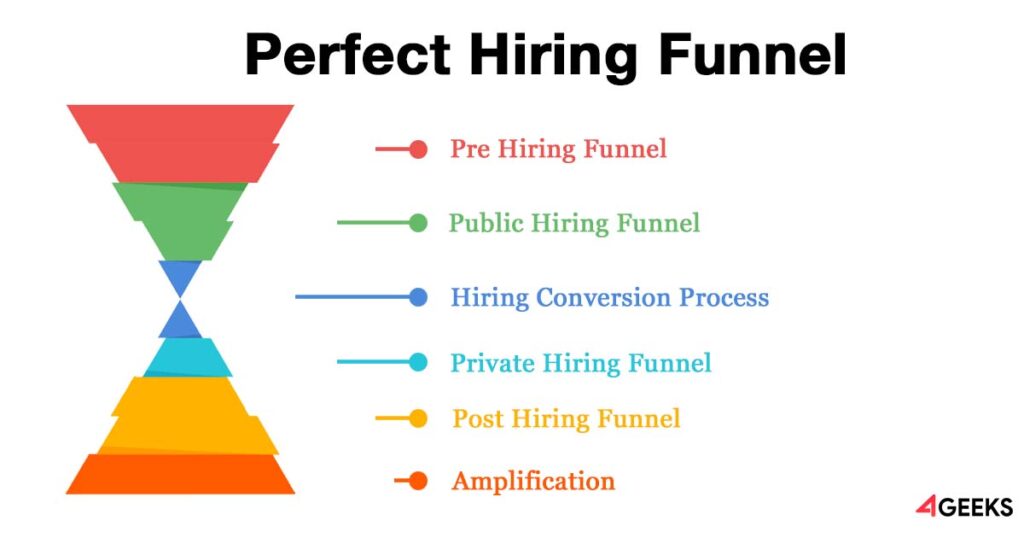
For this we need to clarify the term K-factor. Basically it is the number that gives us the growth rate of something. In this specific case we will take it for the recommendations of new collaborators. This number is generally used for websites, apps or customers.
So the question is: What viral factor do you have to attract new talent internally?
We usually look for talent outside our company but we do not involve people who are already inside. Human beings identify with other human beings who look alike and we can take advantage of this.
There are many ways to increase this number but it is not the purpose of this article, if you want to know more about it leave a comment. And the other way we can amplify our reach to attract the best recruiters is branding.
We like being part of something bigger than us.
Returning to what we talked about at the beginning of the post. Why is revenue per employee the north star metric in recruitment?
It is the most important metric in the recruitment process because it gives us an overview of our most valuable resource: people. Due to a good recruitment process you can forecast the RVP you need or are looking for.
But what about the 3 secret metrics?
The 3 secret metrics in your hiring process
Throughout this process there are known or established metrics, but there are also others that can give us feedback and awareness to our recruitment process. Let’s meet 3 that give you valuable information.
Referer for hire
In the amplification phase we talk about the K-Factor that gives us the viral index for new recruits through the same employees. With the Referer to Hire metric we average the recommendations of all employees in a set period of time.
For example, if John recommends one person and Jane recommends 3 over a year, we tell you that the RTFa = (1 + 3/2) = 2.
Be careful not to confuse the K-factor that tells us the trend.
Revenue per reject
One question we don’t ask ourselves regularly is what do we do with people who don’t cover the profile we are looking for for the position?
The following usually happens:
We store it in a folder for some vacancy in the future.
And that’s it.
But we can do more with the information of the applicants. We can reduce the cost of hiring and make a profit for every job rejected.
Some examples are:
- Rent our talent pool to other recruiters.
- Influence to share our messages.
- Create a community
- And more…
Although revenue is not always clear, it is a great paradigm shift to ask ourselves what to do with these already segmented profiles.
Branding spend percentage
Branding is not only to attract customers as we saw, it also serves to attract talent. Then we must assign a percentage of the branding budget to recruitment.
It is never easy to parameterize the expense and ROI of branding but even with an empirical percentage we can have a better picture.
These are the necessary and sufficient steps for a perfect hiring funnel. For each of the funnel phases there are different metrics that allow you to keep a better record.
Download the infographic list of metrics.
